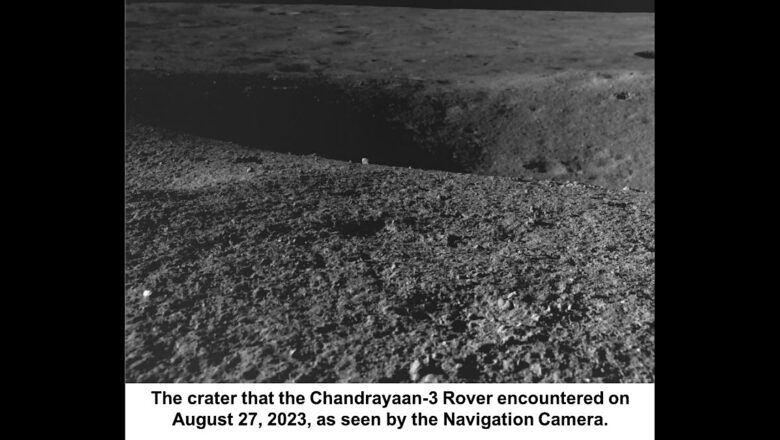
views
Digging deeper into the mysteries of the moon, India’s ambitious space mission Chandrayaan-3 has begun collecting critical data, paving way for first-of-its-kind observations of the lunar South Pole. Five days since its historic touchdown, all its eight scientific payloads are now active.
The first such findings have emerged from Chandra’s Surface Thermo physical experiment (ChaSTE) — one of the payloads aboard Lander Vikram. The experiment was specifically developed by Space Physics Laboratory (SPL), Vikram Sarabhai Space Centre (VSSC) in collaboration with Physical Research Laboratory (PRL), Ahmedabad, to measure thermal properties of lunar topsoil near the polar region.
FIRST-SUCH OBSERVATIONS FROM LUNAR SOUTH POLE
The lunar surface is quite uneven and covered by a layer of debris called regolith with varying thickness. The current understanding is that the surface is somewhat “fluffy” and may not be a very good conductor of heat. Space scientists say it is crucial to understand the varying nature of the lunar soil in order to plan extended human presence on the moon in near-future.
A graph shared by the Indian Space Research Organisation (ISRO) illustrated these temperature variations of the lunar surface from 0 to 50°C, as recorded by the Lander at various depths. However, the data is quite preliminary, and it will continue to vary depending on the time of the day on the moon, say scientists.

“The detailed observations are underway. But this data confirms that our scientific instruments are working well on the moon and collecting data as required,” Dr Anil Bhardwaj, Director of Physical Research Laboratory (PRL), Ahmedabad, told News18.
Chandrayaan-3’s Lander is collecting this data by inserting a probe 10 cm into the lunar soil to measure the variation in temperature at each depth. It’s fitted with as many as 10 temperature sensors. “The probe is almost like a thermometer inserted into the lunar surface. Our focus is to understand how heat is conducted in the lunar surface as we go from top surface to the bottom,” said the senior scientist with years of research in planetary and space sciences and solar system exploration.
DATA WILL HELP PLAN FUTURE MANNED MISSIONS TO MOON
Indian scientists have spent years integrating the payload, which was initially expected to collect data during Chandrayaan-2. However, when the Lander crashed, it was built again to be carried to the moon aboard Chandrayaan-3. India’s third mission to the moon scripted history on August 23 by becoming the first spacecraft to land near the South Pole.
“Chandrayaan-3’s Lander is placed at 70-degree south and it’s the first such observations to emerge from there. If we are to develop a future base for astronauts on the lunar surface, then we need to know everything about the soil there. Not just texture, but also its physical and thermal properties,” shared the senior scientist.
With all the scientific payloads now active, the data is being transmitted through the Indian Deep Space Network (IDSN) as well as deep space antennas monitored by international agencies, including NASA and ESA.
The data will also help in setting up a lunar base near the South Pole of the moon in near-future. While several previous missions led by National Aeronautics and Space Administration (NASA) have tried to measure the properties of the lunar soil, it is the first such observation to emerge from the South Pole. The US-led Apollo missions in the 1960s and former Soviet Union (now Russia) had even brought back samples of the lunar soil and rocks to be studied on Earth. China also achieved the feat in 2020 and brought back samples from the far side of the moon.
Chandrayaan-3 Mission:Here are the first observations from the ChaSTE payload onboard Vikram Lander.ChaSTE (Chandra's Surface Thermophysical Experiment) measures the temperature profile of the lunar topsoil around the pole, to understand the thermal behaviour of the moon's… pic.twitter.com/VZ1cjWHTnd
— ISRO (@isro) August 27, 2023
Meanwhile, the Rover of Chandrayaan-3 has been rolling on the lunar surface, with two of its payloads collecting data. On Sunday, it came across a four-meter diameter crater positioned three meters ahead of its location. However, it was successfully commanded to retrace the path and has been safely heading on a new path, said the Indian Space Research Organisation (ISRO) in a statement.

















Comments
0 comment